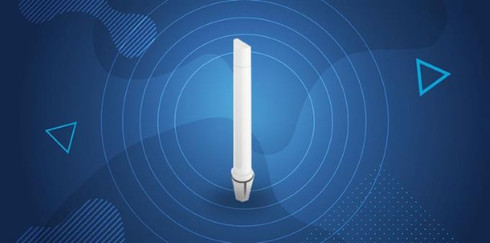6 Common IoT Antenna Mistakes
Choosing the right antenna is crucial for reliable, efficient, and cost-effective IoT deployments. Yet, many projects underperform simply due to incorrect antenna choices. Here are five common mistakes to avoid—each one with the potential to drastically improve your system's performance.
Take advantage of our system design and installation services. Learn more or call us for a free consultation: 1-800-969-8189.
1. Using the Router’s Built-In or Stubby Antenna
One of the most frequent mistakes in IoT setups is using the standard antennas that come with the cellular router. These are typically designed for basic, indoor environments. When installed inside an enclosure, the antenna is effectively trapped in a Faraday cage—blocking the signal from getting out.
Note: Moving the antenna outside makes a huge difference. We’ve backed this up with both theoretical models and thousands of real-world tests. Simply placing the antenna outdoors has shown signal strength improvements of 10 to 20 dB. That’s a game changer in low-signal or rural environments.
For these scenarios, we recommend using high-gain directional antennas such as the LPDA-92 or XPOL-24 5G to maximize signal quality and stability.

High-gain directional antenna featuring up to 10.8 dBi of gain, allowing up to 5 miles of range.
Shop Now: $152.07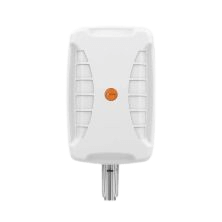
Cross-polarized 4x4 MIMO outdoor directional antenna with up to 11 dBi of gain.
Shop Now: $404.252. Choosing the Wrong Antenna Type: Omni vs. Directional
Not every IoT application needs the same type of antenna. Selecting between an omnidirectional and a directional antenna can significantly impact coverage and efficiency.
Example:
A farmhouse with 50 IoT sensors located north of the building would benefit more from a directional antenna aimed in that direction. If later sensors are added in multiple directions, switching to an omnidirectional antenna becomes more suitable.
In a factory setting, where machines like injection molders or laser cutters communicate directly with one another, directional antennas improve point-to-point communication and reduce interference.
For omnidirectional coverage, ideal when signals come from multiple directions, we recommend the OMNI-293 and EPNT-4. These antennas offer reliable performance across a range of applications, from fixed installations to mobile and compact setups.
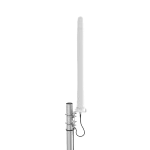
High-gain, wideband, omnidirectional antenna with band 71 and n78 support.
Shop Now: $220.70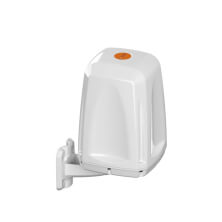
Robust, cross-polarized omnidirectional antenna able to house a small router inside.
Shop Now: Starting at $271.95If the signal is coming from a specific direction, directional antennas are more effective. Our top picks include the XPOL-24 and LPDA-92, all designed to maximize signal strength and data throughput in targeted deployments.


Powerful log-periodic directional antenna with up to 5 miles of range.
Shop Now: $152.07Learn more in our article: Omni vs Directional: Which Antenna is Right for IoT?
3. Using a Narrow Band Antenna
Narrowband antennas may seem cost-effective at first, but they come with serious limitations for IoT:
- They’re tied to specific frequencies and regions, making them unsuitable for roaming or global deployments.
- They don’t handle movement or switching between mobile towers well—bad for asset tracking or any other mobile applications.
- They're more prone to interference or detuning, especially in small or dense devices.
Broadband antennas, on the other hand, cover a wide range of frequencies. That means one model can work across multiple regions and applications. This simplifies logistics, lowers inventory requirements, and reduces the chance of configuration errors. It's a smart choice for any scalable or large IoT rollout.
We recommend our PUCK series and OMNI-293 antennas, offering ultra-wideband coverage from 617 to 6000 MHz to ensure seamless compatibility with legacy, current, and emerging IoT technologies.
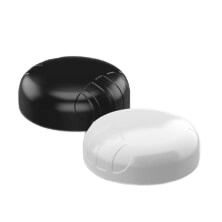
Wideband, low-profile omnidirectional antennas with flexible mounting options covering frequencies 617-6000 Mhz (depending on configuration). Available in SISO and 2x2 MIMO.
Shop Now: Starting at $64.18
Wideband omnidirectional antenna covering frequencies 617– 3800 MHz.
Shop Now: $220.704. Underestimating the Role of Antennas in Power Efficiency
It’s a common misconception that antennas only affect connectivity. When an IoT device struggles with poor signal strength, it increases its power output to maintain communication—leading to faster battery drain. This is especially problematic for remote or hard-to-reach devices like environmental sensors or agricultural gateways.
A high-quality antenna enhances signal reception, enabling the device to transmit data more efficiently and conserve energy. In the article “Does Signal Strength Affect Battery Life? Discover the Truth About Phone Battery Drain” by Ellis Gibson (B.Sc. Mechanical Engineering), it’s noted that a University of California, Berkeley study found devices in low-signal conditions can use up to 50% more battery power than those with strong signals. This is due to the extra effort required to stay connected under challenging circumstances.
Stronger signal reception doesn’t just save power—it extends device lifespan, reduces maintenance costs, and ensures greater uptime in mission-critical applications.
When choosing a directional antenna, the best options are the XPOL-24 and LPDA-92. These antennas perform well in terms of signal gain, MIMO or SISO capabilities, supported frequency bands, and radiation patterns.
For omni-directional antennas, the top performers are the OMNI-293, OMNI-292, the PUCK range, and the MIMO-3 series. These antennas offer reliable performance across a wide area and are well-suited for applications where signals come from different directions.
5. Using a Poorly Matched Antenna
Antenna matching is often overlooked, but it's critical for data integrity. A poorly matched antenna can cause:
- Packet loss
- Corrupted data
- Unstable connections
This is especially problematic in urban or industrial environments where RF noise is high. A properly engineered antenna, like those from Poynting, helps minimize interference and maintain consistent performance—even in demanding conditions.
A well-matched antenna means low VSWR, which results in efficient power transfer and excellent performance.
We recommend the LPDA-92 antenna, which offers a very low Voltage Standing Wave Ratio (VSWR) of less than 1.5:1. This indicates minimal signal reflection and efficient power delivery to the antenna.

High-performing log-periodic directional antenna with long-range and low VSWR.
Shop Now: $152.07Next, we suggest the OMNI-293 antennas, which maintain a VSWR of less than 2:1 across more than 95% of their supported frequency bands.

A low VSWR means that only a small portion of the signal is reflected to your device. This allows more of the signal power to be transmitted through the antenna, improving data transmission and overall performance.
6. Using a SISO Antenna When MIMO is Required (and vice versa)
Choosing between a SISO and MIMO antenna typically comes down to bandwidth requirements. A general rule of thumb is that higher connection speeds require multiple data streams for a single WAN connection; thus, MIMO (multiple input, multiple output) is necessary.
The trade-off with using a single MIMO antenna is that it generally offers less antenna gain across the supported frequency range. This is because antenna gain is often related to the size of the antenna elements. A single 2x2 MIMO antenna consists of two elements in one enclosure, meaning each element is usually smaller to fit within the available space.
On the other hand, using a SISO antenna of the same size—comprising only one larger antenna element—can result in higher gain, offering greater sensitivity and range.
That said, it is possible to optimize performance by using multiple SISO antennas connected to a MIMO-capable device, such as an LTE or 5G router. This configuration allows you to benefit from both high gain and MIMO throughput. A good example is using two Poynting LPDA-92 high-gain directional antennas connected to a 2x2 MIMO LTE or 5G router.
In conclusion, for applications with low bandwidth requirements—such as environmental monitoring for IoT, where small data packets are transmitted—a SISO antenna is typically sufficient. However, for high-throughput applications like live video streaming or online gaming, 2x2 or 4x4 MIMO is essential, as it enables multiple data streams and significantly increases available bandwidth.
Final Thoughts
Avoiding these five common mistakes can help you build a more reliable, energy-efficient, and scalable IoT solution. Whether you’re deploying in agriculture, manufacturing, healthcare, or smart cities, the right antenna makes all the difference.
Need help selecting the right antenna for your setup? Call us at 1-800-470-6777 or email us at sales@signalboosters.com — we’re here to help.

